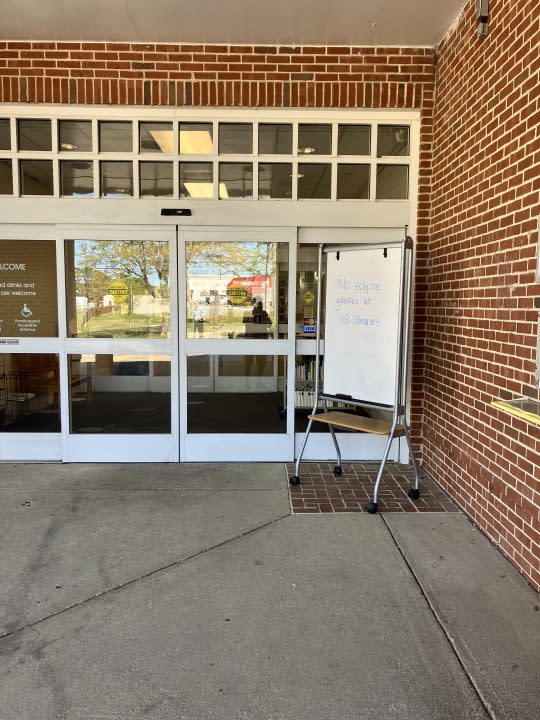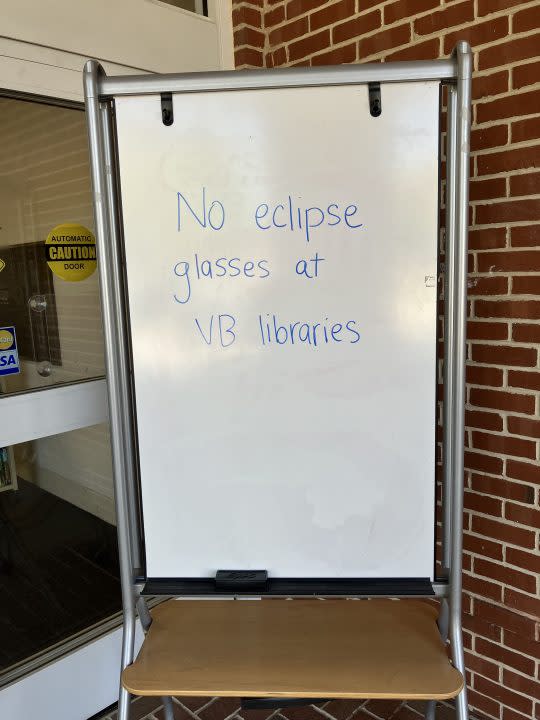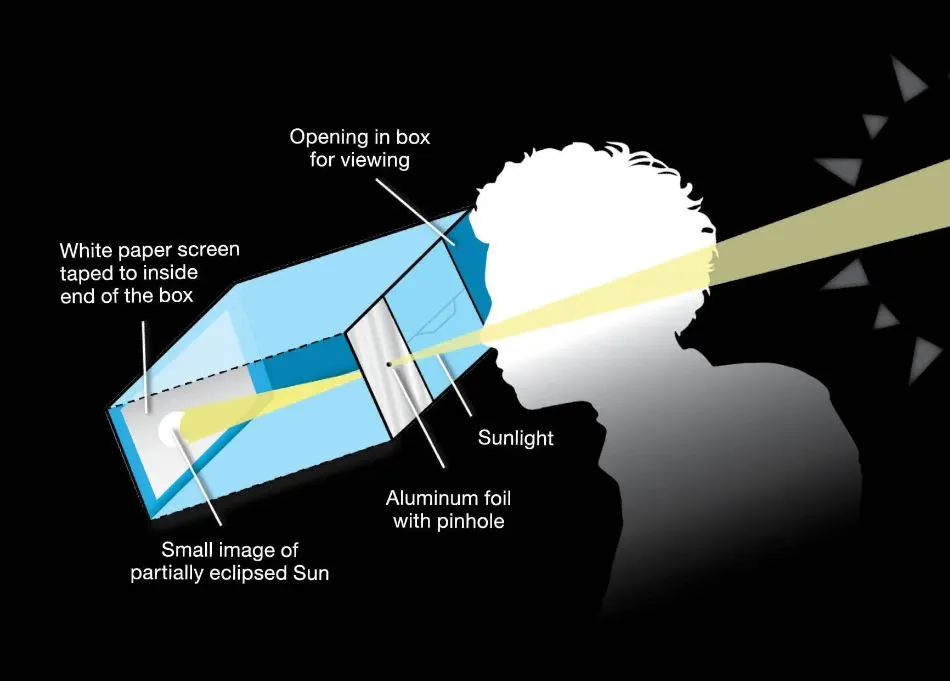Couldn’t find solar eclipse glasses in Hampton Roads? You’re not alone
PORTSMOUTH, Va. (WAVY) – Some folks who waited until the day of the solar eclipse to get a pair of viewing glasses reportedly had a tough time finding them.
Many locations providing the glasses ran out of their supply ahead of the event.
Don’t get left in the dark; check out these local eclipse events
The eclipse began in our region just after 2 p.m. Monday, with its peak viewing time around 3:20 p.m. It was all over by 4:30 p.m.
WAVY reached out to the Virginia Living Museum, which was providing a limited supply of glasses. Their spokesperson confirmed prior to the eclipse that they were out of glasses Monday, which could be viewed as a good thing, because so many people are heeding the advise to get a pair.
A little after noon, 10 On Your Side confirmed that First Landing State Park in Virginia Beach had sold out of its eclipse glasses. The event advertised that there would be glasses available for purchase, but they were apparently in limited supply.
WAVY also heard from a viewer who went by a Virginia Beach Library Monday, only to find a sign posted at the entrance that stated, “No eclipse glasses at VB libraries.”


Solar eclipse: When do you need to put on your eclipse glasses?
Leading up to the celestial event, Virginia Beach Public Library (VBPL) hosted a full schedule of special programs related to the eclipse. Anyone who attended one could get a free pair of eclipse safety glasses. Funding for the glasses was provided by the Gordon and Betty Moore Foundation, the Space Science Institute, through its Solar Eclipse Activities for Libraries (SEAL) program.
Did you also have trouble tracking down glasses to view Monday’s eclipse? If so, let us know.
Virginia is not in the path of totality, but you can still enjoy the partial phase of the Solar Eclipse with proper eye protection and/or an eclipse-viewing device for indirect viewing.
If you don’t have a pair a special eclipse viewing glasses, there are other ways to safely view the solar eclipse. If you don’t protect your eyes, it could result in solar eye damage, which can cause blurred vision and color distortion.
Make a Pinhole Projector
NASA posted a video that walks you through how to create a pinhole projector. You’ll need the following supplies:
A cardboard box (a cereal or shoe box works great)
A piece of white paper
Scissors
Tape
A pencil
Aluminum foil
A push pin
“With the Sun behind you, sunlight will stream through a pinhole punched into aluminum foil taped over a hole in one side of the box. During the partial phases of a solar eclipse, this will project a crescent Sun onto a white sheet of paper taped to the inside of the box. Look into the box through another hole cut into the box to see the projected image,” said NASA.

You can not use standard binoculars or telescopes to watch a solar eclipse, unless you add solar filters to the front of the device.
Regular sunglasses are also not safe for looking directly at the sun.
Indirect Viewing
Use a kitchen colander. Angle it so you can watch the light pass through the holes. You can also view the light pass through tree leaves. In both scenarios, the sunlight will project little eclipse-shaped images on the ground.
For the latest news, weather, sports, and streaming video, head to WAVY.com.

